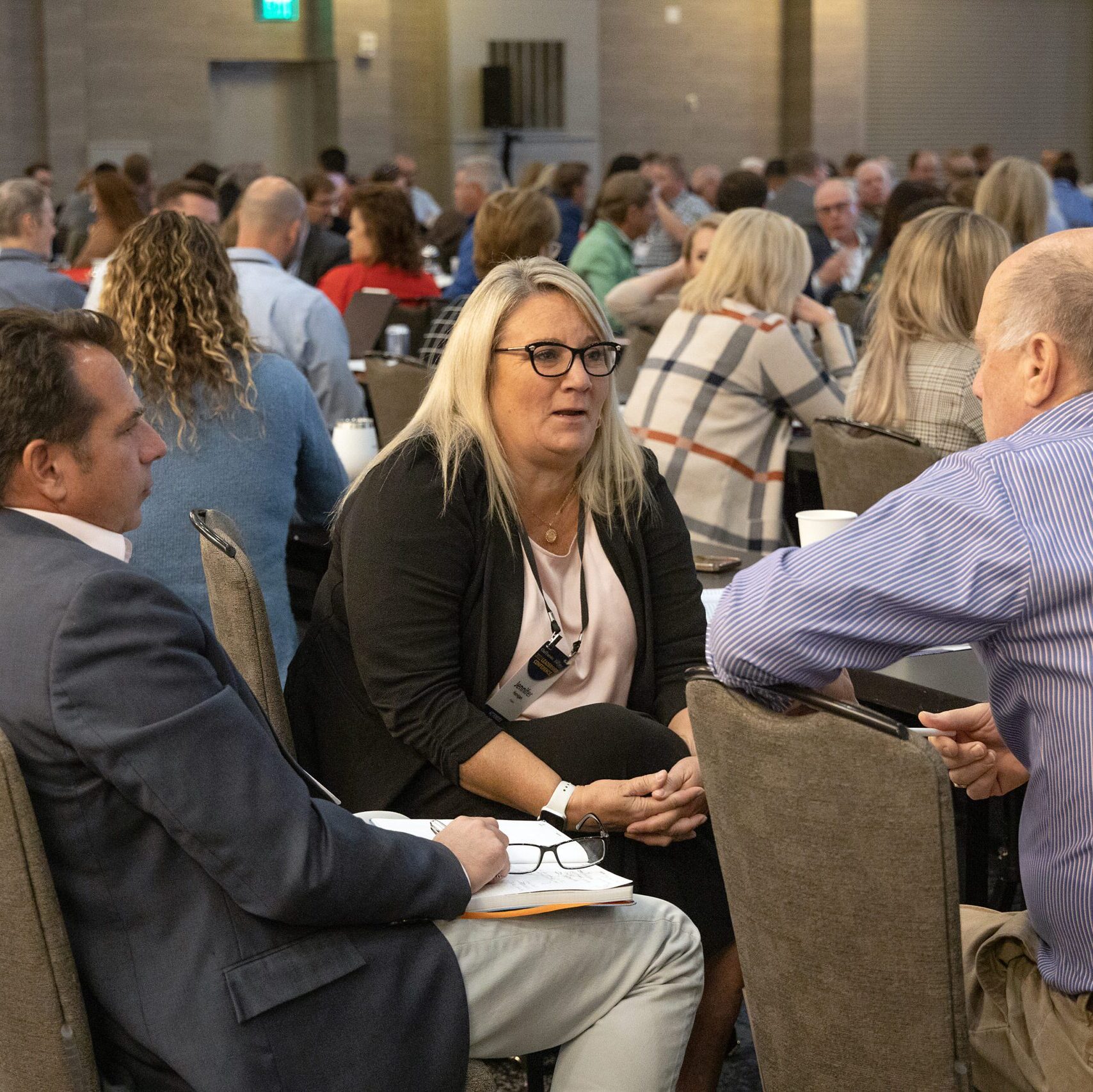


No matter where you are on your agentic journey, it’s natural to feel a little FOMO hearing about the sophisticated implementations some enterprises are already deploying. But going from standing on the sidelines to standing up complex orchestration isn’t as daunting as it sounds.
To help demystify agentic AI, we’ve created a four-level agentic maturity model.
A Level 1 agent can retrieve information and make recommendations. This might take the shape of an agent that helps your customers on an external-facing website or an internal agent that helps employees with their tasks.
Imagine an airline customer asking about a ticket cancellation policy. An agent can skim through knowledge articles and access CRM records to provide details based on the customer’s loyalty program status or remind them to use their credit within a specified amount of time.
These use cases might sound simple, but they deliver value and lay the foundation for more sophisticated deployments later on. This is the stage where companies define their overarching AI strategy, establish guardrails and begin connecting data sources.
Building on the information-retrieval and recommendation capabilities of Level 1, a Level 2 agent can act on the data it finds and autonomously execute low-complexity tasks, such as summarizing an account record or cancelling a flight.
Let’s revisit the airline example. Rather than merely pulling from static knowledge articles, a Level 2 agent can connect directly to the airline’s reservation system via API and book a new ticket for our customer. Behind the scenes, companies at Level 2 maturity are focused on mapping their AI strategy against key business objectives and implementing company-wide AI literacy efforts. At this stage, formal governance and well-defined security and privacy guardrails are essential as agents gain more access and autonomy.
Level 3 is where we get to throw true complexity at our agents, which can deliver concierge-level service, orchestrating end-to-end workflows with harmonized data across multiple domains. These agents can reason autonomously, determine a best course of action and put their plan into motion without direct human intervention.
In our airline example, the Level 2 agent was able to process a ticket cancellation and even book a new flight. But this workflow stops just short of seat selection. Since our agent already has access to the customer’s CRM record, it can see that they typically upgrade their seat to premium and proactively offer an aisle seat upgrade. It’s important to note that the seat upsell is dynamically “triggered” by the customer’s unique CRM data. Let’s imagine instead that the customer record indicates a preference for transiting through Chicago O’Hare International Airport. The same event-triggered functionality would offer to route the flight accordingly as long as there’s availability.
But the agent still needs to bill the customer for the seat upgrade. Unlike Level 2, which was bound to a single domain (reservations), a Level 3 agent is able to straddle multiple systems, including billing, to complete the transaction. Of course, with additional access comes more stringent safeguards.
Level 3 maturity represents the upper bound of agentic sophistication currently running in production, but we can peek into the future to see what Level 4 might look like.
Level 4 maturity envisions a bustling ecosystem of AI agents seamlessly connecting to other agents across disparate tech stacks. The first thing to understand about this stage of agentic maturity is that so far, no one has gotten there. In large part, that’s because the open standards needed to make this a reality have only recently begun to take shape.
But let’s extrapolate forward using our airline example at how we can extend this interaction further. After landing, many travelers book a taxi and head to a hotel, so it’s easy to imagine a future where Level 4 agents automatically connect to a rideshare company agent to meet travelers on arrival or a hotel agent to speed check-in.
This vision of agent interoperability might seem far off, but consider how quickly we’ve already navigated the first three levels of agentic maturity. If the rapid pace of innovation we’ve already seen is any indication, the future might be closer than we think.
0

1:00 - 5:00 pm
Over 70% of Executives Surveyed Agree: Many Strategic Planning Efforts Lack Systematic Approach Tips for Enhancing Your Strategic Planning Process
Executives expressed frustration with their current strategic planning process. Issues include:
Steve Rutan and Denise Harrison have put together an afternoon workshop that will provide the tools you need to address these concerns. They have worked with hundreds of executives to develop a systematic approach that will enable your team to make better decisions during strategic planning. Steve and Denise will walk you through exercises for prioritizing your lists and steps that will reset and reinvigorate your process. This will be a hands-on workshop that will enable you to think about your business as you use the tools that are being presented. If you are ready for a Strategic Planning tune-up, select this workshop in your registration form. The additional fee of $695 will be added to your total.

2:00 - 5:00 pm
Female leaders face the same issues all leaders do, but they often face additional challenges too. In this peer session, we will facilitate a discussion of best practices and how to overcome common barriers to help women leaders be more effective within and outside their organizations.
Limited space available.

10:30 - 5:00 pm
General’s Retreat at Hermitage Golf Course
Sponsored by UBS
General’s Retreat, built in 1986 with architect Gary Roger Baird, has been voted the “Best Golf Course in Nashville” and is a “must play” when visiting the Nashville, Tennessee area. With the beautiful setting along the Cumberland River, golfers of all capabilities will thoroughly enjoy the golf, scenery and hospitality.
The golf outing fee includes transportation to and from the hotel, greens/cart fees, use of practice facilities, and boxed lunch. The bus will leave the hotel at 10:30 am for a noon shotgun start and return to the hotel after the cocktail reception following the completion of the round.